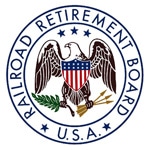Railroad Retirement Board Labor Member John Bragg released the following message on Aug. 4:
Brothers and Sisters:
In my last update on July 9, 2020, I informed you of correspondence that the Railroad Retirement Board (RRB) received from the White House alleging that the National Railroad Retirement Investment Trust (NRRIT) was investing in companies which posed national security threats and raised humanitarian concerns. We were assured by NRRIT that it was not investing in these companies and that it has screening processes in place that identify those companies so that it does not and will not invest in them. Given the seriousness of the allegations, the RRB Board members assured the White House that a follow up with NRRIT would occur. The RRB Board Members sent a letter to NRRIT, again sharing some concerns, and followed up with a conference call on July 29th. NRRIT formally responded to the concerns raised in a letter dated July 30, 2020. That letter is attached for your viewing.
I want to reiterate that our trust fund is stable and NRRIT’s investments are producing the returns needed to ensure the stability of the fund well into the future. Every railroader has the right to retire with financial security and a sense of dignity. The RRB, with the help of NRRIT and its investments, helps ensure that right.
John Bragg,
Labor Member, Railroad Retirement Board
Tag: NRRIT
 Beginning in 2002, a significant portion of the assets of the Railroad Retirement Board (RRB) has been invested in private stocks, bonds, and other investments. Prior to the Railroad Retirement and Survivors’ Improvement Act of 2001, P.L. 107-90, surplus railroad retirement assets could only be invested in U.S. government securities— just as the Social Security trust funds must be invested. The 2001 act established the National Railroad Retirement Investment Trust (NRRIT; hereinafter, the Trust) to manage and invest part of the RRB’s assets in the same way that the assets of private-sector and most state and local government pension plans are invested. The remainder of RRB’s assets continues to be invested solely in U.S. government securities.
Beginning in 2002, a significant portion of the assets of the Railroad Retirement Board (RRB) has been invested in private stocks, bonds, and other investments. Prior to the Railroad Retirement and Survivors’ Improvement Act of 2001, P.L. 107-90, surplus railroad retirement assets could only be invested in U.S. government securities— just as the Social Security trust funds must be invested. The 2001 act established the National Railroad Retirement Investment Trust (NRRIT; hereinafter, the Trust) to manage and invest part of the RRB’s assets in the same way that the assets of private-sector and most state and local government pension plans are invested. The remainder of RRB’s assets continues to be invested solely in U.S. government securities.
Congress structured the Trust to ensure independence of investment decisions and limit political interference. It also aimed to increase railroad retirement system funding, add enhanced benefits, potentially reduce taxes, and protect system financing in case of market downturns. The Trust’s assets are invested in a diversified portfolio, both to minimize investment risk and to avoid disproportionate influence over an industry or firm. Since the Trust is a nongovernmental agency, it is not subject to the same oversight as federal agencies. However, the act requires an annual management report to Congress.
The Trust’s investments have generally followed the markets’ recent performance. From FY2003 to FY2014, the Trust’s annual returns averaged 8.7 percent, just slightly above the expectations of the bill’s drafters, who assumed nominal annual returns of 8.0 percent. The economic downturn did not spare the Trust, which lost 19.1 percent in FY2008, 0.7 percent in FY2009, and 0.1% in FY2011. However, the Trust exceeded its own strategic policy benchmarks in FY2012, FY2013, and in FY2014 with a FY2014 rate of return of 10.2 percent. As the Trust’s investment portfolio diversified over time, its administrative expenses steadily increased, to 36 basis points in FY2011, but fell to 29 basis points in FY2013 and remain low when compared with other mutual funds.
The Trust is designed to maintain four to six years’ worth of benefits in case of lower-than-expected returns. To maintain this balance, the tier II tax rates are set to automatically adjust as needed. This tax adjustment does not require congressional action. The tier II tax rates increased in 2013 and again in 2014.
Read the full report from the House Ways and Means Committee here.